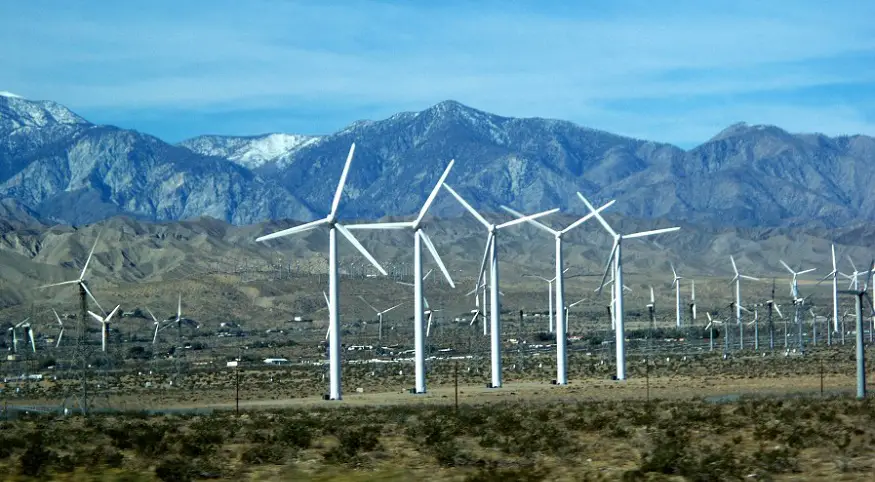
Stanford researchers make unique wind energy farm discovery
July 8, 2019A new study conducted by researchers from Stanford could be good news for wind farms.
The researchers have discovered that a wind energy farm can generate more electricity if its turbines are angled slightly away from wind, instead of pointing directly into it.
This method of generating wind is called wake steering.
Unlike solitary wind turbines, which generate the most power when they are pointing directly into the wind, wind energy farms – spaces filled with rows of tightly packed turbines – struggle to function at their maximum potential when positioned this way.
The reason is that when these tightly packed turbines face the wind head on, wakes from upstream generators can interfere with those positioned downstream. The wake from a wind turbine lowers the output of those behind it in a similar way to how a speedboat can be slowed by choppy water from a boat sailing in front of it.
Positioning turbines away from oncoming wind is called wake steering. The newly published Stanford wind energy farm study found that wake-steering can lower the interference and improve both the quality and quantity of power from these farms as well as has the potential to lower operating costs.
“To meet global targets for renewable energy generation, we need to find ways to generate a lot more energy from existing wind farms,” said John Dabiri, professor of civil and environmental engineering and of mechanical engineering, and senior author of the paper, reports Stanford.edu.
“The traditional focus has been on the performance of individual turbines in a wind farm, but we need to instead start thinking about the farm as a whole, and not just as the sum of its parts.”
The wind energy farm study was conducted on a working wind farm.
Before testing their theory, the Stanford group came up with a quicker way to calculate the optimal misalignment angles for turbines. They tested these calculations on a wind turbine farms in Alberta, Canada in collaboration with the farm’s operator, TransAlta Renewables.
Through their study, the researchers found that the overall power output of the farm boosted by up to 47% in low wind speeds, depending on how the turbines were angled, and by 7 to 13% in average wind speeds. Additionally, wake steering reduced the ebbs and flows of energy that are typically challenging with wind electricity generation.
“Through wake steering, the front turbine produced less power as we expected. But we found that because of decreased wake effects, the downstream turbines generated significantly more power,” said Michael Howland, a mechanical engineering PhD student and lead author on the study.
 The Stanford wind energy farm study was published in the journal “Proceedings of that National Academy of Sciences”.
The Stanford wind energy farm study was published in the journal “Proceedings of that National Academy of Sciences”.



 With over 15 years of reporting hydrogen news, we are your premier source for the latest updates and insights in hydrogen and renewable energy.
With over 15 years of reporting hydrogen news, we are your premier source for the latest updates and insights in hydrogen and renewable energy.